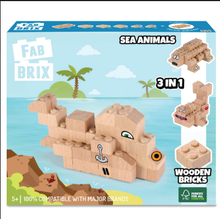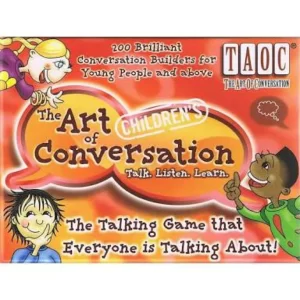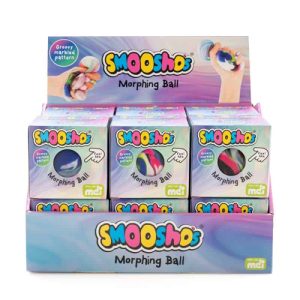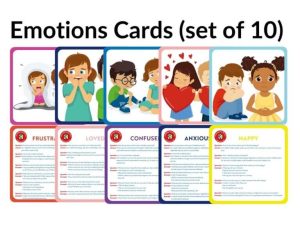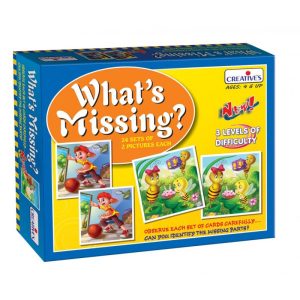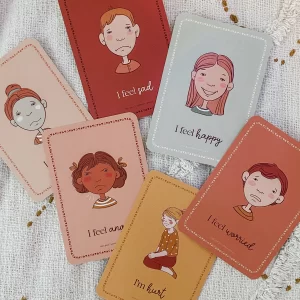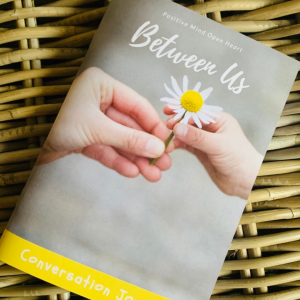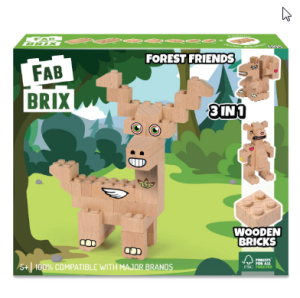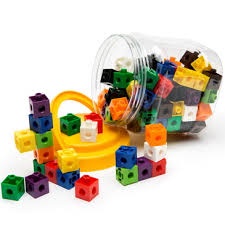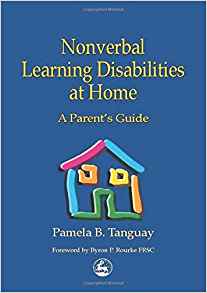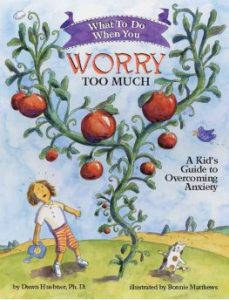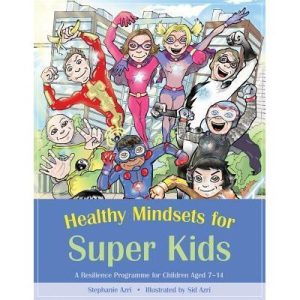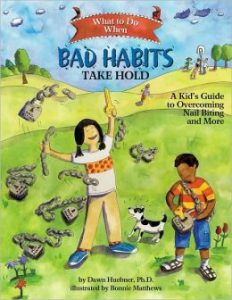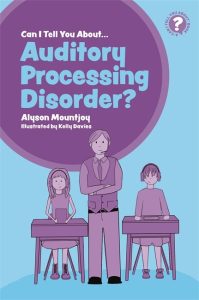Nonverbal Learning Disabilities at Home: Parent Guide
The author has provided a book that is essential reading for caregivers of children and adolescents with NLD. It should not only be read but kept on hand for easy reference as the youngster develops. It should be valued as a rich source of helpful suggestions, and as a springboard for the creativity of the concerned caregiver. Pamela Tanguay has done all of us involved with the syndrome of NLD a great favor by providing this book.'
– from the foreword by Byron P. Rourke, FRSC
Do you know a child who is bright, charming and articulate, but has no friends? A child who showed early signs of intelligence, but is now floundering, academically and emotionally? Children with Nonverbal Learning Disabilities (NLD) are an enigma. They're children with extraordinary gifts and heartbreaking challenges that go far beyond the classroom. Nonverbal Learning Disabilities at Home explores the variety of daily life problems children with NLD may face, and provides practical strategies for parents to help them cope and grow, from preschool age through their challenging adolescent years. The author, herself the parent of a child with NLD, provides solutions to the everyday challenges of the disorder, from early warning signs and self-care issues to social skills and personal safety. User-friendly and highly practical, this book is an essential guide for parents in understanding and living with NLD, and professionals working with these very special children.

EXTRACT
Thinking Skills
When the NLD child is young, her deficits in critical thinking may not be apparent. This level of thinking is not generally expected until the child is at least eight years old, and probably a bit older than that. However, if she is to reach her full potential, and grow to be an independent adult, she needs to be engaged in active learning and critical thinking from the earliest possible age.
DECISIONS AND CHOICES
Decisions and choices are basic thinking skills which start at a very tender age. If you ask your toddler what she wants to eat, she tells you. Although it may not be what you will allow, she has an idea of what she likes and wants. When you ask an NLD child what she wants, she may not have an answer. The child may look at you with a blank expression, so you end up making the decision for her. However, if you ask her to choose between apple juice and grape juice, she will be more apt to respond. Making even a simple decision requires that you have a lot of information.
Even very young children have nonverbal information that allows them to make decisions that NLD children are unable to make. The neurologically typical child knows the food Mom generally has on hand, or has actually seen it in the refrigerator or cupboard. The NLD child doesn't realize that Mom expects her to intuit what the choices are. In addition, since visual processing is an area of deficit, these youngsters do not rely on that modality to store information. The deficit is even more pronounced when the visual field is cluttered, like a refrigerator or cupboard. So, since the child is unaware that she is supposed to intuit, and couldn't in any event since she didn't process what was in the refrigerator or cupboard, she doesn't have all of the information that she needs in order to make even a simple decision. Yes, it's often easier for us to make decisions on the child's behalf – just hand her a drink – but she needs to learn how to think, and we need to understand her deficits so that we can teach her how to think.
ACTIVE LEARNING
NLD youngsters don't have the learning advantages of their age mates, who process through visual and tactile modalities, through the exploration of their environment and through language. The NLD child's learning modality is limited primarily to language, which puts her at a huge disadvantage. Allowing the child to be cognitively passive further compromises her learning process. Use every opportunity to involve the child in the process of choice, as well as decision-making and active thinking, or she will become passive, and highly dependent.
No matter how old your child is, if you notice that she tends to be passive and allows you to make decisions for her, begin now to involve her in the thinking process. Start simple – instead of making all of the child's decisions, allow her to make choices whenever there is an opportunity to do so. However, it would be best to limit the choices that you provide or she may become confused, and you will be back to seeing the child's blank facial expression.
BASIC THINKING SKILLS
There are skills that can be developed even in young children in order to improve their visual processing and thinking skills, which include the ability to:
categorize (group like or related information together);
compare and contrast (how are things different, and how are they alike);
observe (watch carefully, study);
identify patterns (a sequence in which things occur);
look for cause and effect (does something specific happen as a result of a particular act or activity?);
generalize (apply what is learned to a new or different situation);
problem solve (determine appropriate method to overcome a difficulty).
Basic skill development
These basic thinking skills can be fostered through everyday activities. However, an adult needs to facilitate the learning process with the NLD child, and make the connections that the child may not make on her own.
A classic example of teaching a skill, where generalizing the learned information comes very slowly, is crossing the street and/or watching for cars. You teach the child over and over and over again that she is not to cross the road in front of traffic. This seems to be an almost universal problem with NLD kids. If you teach the youngster about traffic lights – what the red and green lights mean (stop and go for cars) and the walk light (which means that people can cross the street) – she may learn this routine fairly readily, especially if you constantly point out the rules whether you're walking or in a car. Unfortunately, there are many, many situations where there aren't lights. These youngsters continually dart out in front of oncoming traffic, and it may take many years for the child to learn to stop, look, and listen before crossing a street, when the 'cue' of a traffic light isn't present. The child will not generalize the learning to a situation where there are no lights. She does not understand that the light takes the place of thought, and if there isn't a light, there is a series of connections that you must make on your own. Therefore, it can be quite dangerous for the child when crossing streets where there is no intersection with traffic lights, or worse yet, when she is in parking lots.
Parking lots are even more difficult for these youngsters to navigate. The visual field is very cluttered (lots of cars and people), she has to watch for cars moving down the aisles or backing out of parking spaces, there are sounds coming from many directions, and there is danger in walking between parked cars because someone might open a door and hurt her. It's imperative that you teach the child that she is not to move unless you are holding her hand. Maybe the embarrassment of having her hand held as she gets older will help her to remember the rules.
Thinking, making connections, and generalizing information to a new or different situation are skills which must be specifically taught to the child. The following are some ideas that you may find helpful. At the end of each suggestion, in parentheses, are the skill sets that are reinforced by the activity.
Go for a walk with your child. Point out things and talk to her about what you see. Point out the clouds, and note the differences between the big puffy clouds and the thin wispy clouds. Note dark clouds, and talk about what that represents – when the clouds get big and puffy and very dark, it might rain – that's how the sky looks when it rains. If the clouds are big, puffy, and dark, and it's very cold, then it might mean snow. Rain comes when it is warm outside, and snow comes when it is cold – it's frozen rain. Make connections for her. (Observe, patterns, compare and contrast, cause and effect.)
Talk about the seasons, especially if you live in an area where the four seasons are distinct. Explain to the child what happens during each season, and when the seasons change, point out what is happening – the leaves are changing color, what does that mean? They are going to fall off, and soon it will be cold and may snow. To the NLD child, the environment is probably a mystery, so you must make sense of it for her. (Observe, patterns.)
Point out the implications of a certain situation. As you are walking after a rainstorm, show the child that you are walking on firm ground. Show her the muddy areas that aren't good to walk on. Explain what happens – you will get lots of mud on your shoes, and it is very slippery, you could fall and get hurt, and you'll be all muddy. The child probably won't make these connections on her own. That doesn't mean that she isn't smart, it just means that her brain doesn't function by automatically making connections, so you need to train her brain to look for connections. (Observe, cause and effect.)
During one of your walks, if the child sees a big toad or turtle which she wants to take home, humor her. Let her take it home, and then discuss all of the details related to keeping it as a pet. Where will it live? What would we keep it in? What would we feed it? Even if you know all of the answers, talk it through until the child can answer the questions. Help her look the information up in a book, introducing her to research skills. If you're using an encyclopedia, explain what it is, and what it's used for. If you decide to keep a toad, for instance, and you have to get it crickets for food, work with the child to figure out where to get them. Yes, she can catch crickets outside, but that might be a lot of work. Tell her that crickets can be purchased at pet-supply stores. Pull out the telephone book, and show the child how to look up pet-supply stores. Once you have located one, take the child with you to get the crickets as well as any other supplies that you might need. You're engaging her in the critical thinking process, but to the child, it's just plain fun! (Observe, problem solve)
If you consider a pet in the future, have the youngster think back to the toad experience. What did you have to consider? Walk her through all of the steps again. Use books. Use the computer. What kind of pet? What are their needs? Where do we get the pet, and the supplies? What do we do with it when it comes home? You're making the connections – helping the child to generalize learned information. (Observe, problem solve, generalize.)
Watch educational television programs about things that interest her, from insects, to dinosaurs, to tornadoes or volcanoes. Talk to her about the program. Engage her. What would it have been like to live when dinosaurs roamed the earth? What would have been good and bad about that period of time? What would you do if there was a tornado coming? Prod her, encourage her to think! (Observe, compare and contrast, problem solve.)
If the child is adept on a computer, buy software games that have a problem solving component rather than just action games. For example, the objective of the game might be, how do I get these guys from point 'x' to point 'y.' There are dozens of developmental software programs that are great fun for kids, but teach while they entertain. Software packaging should indicate an age level on the box. These ages are based on a child's developmental level. You might want to buy software that is designed for a younger child, especially if she frustrates easily. Also, be careful of programs that are too visually overwhelming. The idea is to improve her visual processing, and a complex visual field may frustrate her too much to develop this skill. (Observe, and other skills depending on the specific application.)
Computer games and other electronic games are also very good for improving hand-eye coordination, finger dexterity and concentration. Many parents are concerned that their children spend too much time on a computer. However, for the NLD child, a computer will probably be her best friend. The key is to buy programs that are appropriate, and target a specific skill (or set of skills), that you want to develop. The better software programs indicate on the packaging what skills their application targets. (Observe, and other skills depending on the specific application.) Tip: If you find that your child gets over-stimulated while playing on a computer for an extended period of time, use a timer. When it goes off, it's time to stop. Or, if your child needs forewarning, set the timer, and when it goes off, tell her that she will have ten more minutes, and set it again. When it goes off the second time, it's time to turn the computer off.
Most kids love hand-held electronic games. These are wonderful for when the child will be going for a long ride in the car, train, or plane. However, instead of buying games that are blood and gore, select Tetris or similar games that require thinking and strategizing. The noise can annoy other passengers, so you may require that the child play either without volume, or with earphones. If you make 'no noise' a rule from the beginning, the child will probably comply in order to be able to play. (Observe, patterns, cause and effect, problem solve, and other skills depending on the specific game.)
Board games are notoriously difficult for these children. They have significant difficulty understanding the rules, as well as the social component – turn-taking, losing gracefully and so on. Although board games are very beneficial for teaching thinking skills, you may have to wait until the child is eight or so before beginning even the simplest game. When you first introduce board games, it might be helpful to start with word games, since that may be the NLD child's strength. (Observe, problem solve and other skills depending on the game.)
Rubik's cubes and similar puzzles are excellent for teaching problem solving. However, these are also quite difficult for most NLD kids. Some will love them, and play for hours on end, trying to figure out how to move all the parts around to get them in the pattern they should be in. Others will throw them across the room and have a tantrum, finding them too difficult. Use your judgment here. Although it is a difficult skill, don't automatically assume that the child can't do this type of activity. Wait until you think that it might be a possibility, and try it. If it totally frustrates the child, then put it away. (Observe, patterns, problem solve.)
Most NLD children have an ongoing love affair with words. Encourage books, as well as sets which have both an audiocassette and book. Again, select books that teach something – whether it's about a concrete topic such as rocks, or something more abstract like friendship. The use of an audiocassette and accompanying book are excellent tools for the NLD child who has early reading difficulties. Since the audiocassette cues the child when to turn a page, she can follow along with the story, and the exercise may reinforce reading skills. Whether it does or not, the child will feel like she is reading independently. (The skills will depend on the topic selected.)
MORE ADVANCED THINKING SKILLS
Since the long-term goal is for the NLD child to develop more sophisticated thinking skills, it is important to continue to introduce age-appropriate activities which will expand her ability, such as higher-level analysis.
An additional aspect of thinking skills should be introduced as soon as the child seems ready, and that is the concept of identifying fact (reality, evidence) versus opinion (thought without actual proof). This is especially important since the NLD youngster often responds to everything that she hears as fact. You could say that this is true of all children, and you would be correct. However, without significant intervention, you may find that your adult child does not understand this distinction. An example here might be helpful.
A young man chooses to live in a particular part of the country specifically because, when he turns on the television each morning, the news anchor says it is the best place to live in the United States. This example may seem like a bit of a stretch, but it really isn't. Look at it from the young man's perspective. The news anchor reports information such as the weather, a local fire, a serious automobile accident, a building collapse – all of these are facts! The recognition that the news anchor's statement – 'It is the best place to live' – is an opinion is lost on this young man, who therefore sounds incredibly naive. This inability to distinguish fact from opinion affects NLD individuals in a variety of ways, from doing a research project for school to being a target for salespeople whose 'pitch' includes statements such as 'this is the best vacuum cleaner ever made.' Therefore, it is critical to begin teaching the concept of fact versus opinion as early as it is possible for the child to understand it.
More advanced skill development
The following are additional thoughts for older children to develop further their thinking skills, including the ability to analyze and distinguish fact from opinion. As above, at the end of each suggestion, the skill sets that are reinforced by the activity are indicated in parentheses.
As your child gets older, continue reading books to her, and discuss them as you go along. Talk to her about the characters – what they are like, how old they seem to be, what they might be feeling. Why did the author include this chapter? What is the author trying to tell us? What would it be like to live during that period? What do you think the clothes were like? What food do you think they ate? Help your child to 'read between the lines,' something with which these children have tremendous difficulty. When you are done with the book, discuss what the main idea was. What were the important parts of the book? Was there a message that the author was trying to get across, but didn't specifically state? These are all critical thinking skills that the child will need by the time that she is in upper elementary or middle school. The more that you work with her at home before she is required to use this skill in school, the better her chances of success. (Observe, analyze.)
Watch television commercials with your child, and once they are over, discuss them. Explain that the purpose was to sell a product. Ask her what the actor or character said or did that made her want to buy the product. Ask her how she can tell if it is true. If it is a toy that looks very appealing and quite large on the television screen, the next time that you are at the toy store, show her the advertised toy. Ask her if it looks like it did on television. Is it larger or smaller? (Observe, compare and contrast, fact vs. opinion.)
While driving in the car, if you observe an automobile accident, point it out to your child and discuss it with her. Did it look serious? What does she think might have caused the accident? Does she think that the weather conditions might have had any effect? What is the likely impact of the accident on traffic? (Observe, cause and effect, analyze.)
Have your child help you assemble something, such as a piece of furniture that comes in pieces, especially if it is for her use. Go over the directions together, and lay everything out on the floor in an orderly fashion, grouping items such as bolt sizes. Discuss what additional items you will need, such as tools, and have the child get them. When assembling the item, make sure that you go through each step as it is outlined in the instructions, reading the step before beginning each task. Point out whether a screw requires a Phillips head or regular screwdriver. Discuss what size hammer might be best for finishing nails. Have the child help by holding pieces together, lining up predrilled holes and so on. (Observe, categorize, problem solve.)
Involve the child in gardening activities. Discuss the location of the garden, and explain that certain plants like certain conditions, such as a particular amount of sun, a type of soil, a level of moisture, and so forth. Look at plants in a book, and have the child select plants that she likes. Help her determine if the particular plant's requirements are compatible with the location where it is to be planted. Once you have both selected plants that you like, and believe are appropriate for the location, determine what additional supplies you will need (shovel, fertilizer, and so on), and take a trip to the nursery. Review the available stock with the child, and decide how many plants you will need based on the size of your selections and the area of the garden. Once you have all of your purchases, it is time to return home and lay out the garden. Together, decide where each plant should go. Rearrange the plants in various ways to see how they might look in different positions. Discuss which plants are taller and would look best in the back of the garden. Have the child dig the holes and prepare them as needed (water, fertilizer), and then insert the plant, returning soil to hold it firmly in place. Once the garden is fully planted, allow the child to tend it (weeding, watering, and insecticide), either alone or with your assistance. (Observe, compare and contrast, categorize, cause and effect, patterns, analyze.)
If the child wants something new, say a bicycle, involve her in the purchase process. Tell her that you are setting a budget of 'x' dollars. Explain that different bicycles have different features and levels of quality. Work with the child to determine what all of the available features are, and then prioritize them based on her interest in each. Go to several bike shops and talk with sales personnel about the pros and cons of each make, model, and feature. Make notes at each store, and indicate the price being charged. Once all of the information has been obtained, sit down with the child and discuss it. It may be helpful to convert the information to a graphic organizer (a chart or simple visual representation of the information). Discuss with the child the advantages and disadvantages of each option, and let her decide which purchase she wants to make that is within the established budget. Once the decision is made as to what you are going to buy, and where, take the child with you when you make the actual purchase. This is an excellent exercise for older children, but be careful not to overwhelm them with information. It is the process that you are teaching, so limit the information to what she is able to manage. (Observe, categorize, compare and contrast, patterns, problem solve, analyze.)
by Pamela Tanguay
Format:Pbk 272 pages




